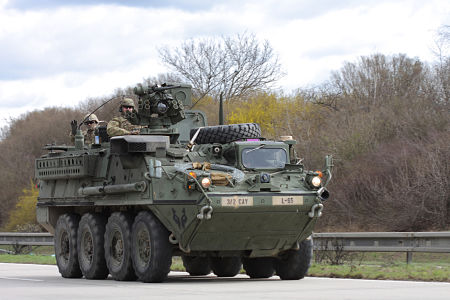Trucking industry finds a tech savvy partner in U.S. Army
Historically, technological advances developed for military purposes find their way into the civilian sector in an organic fashion, taking years for the transfer.
Now, the military and the trucking industry are comparing notes and building on current research in both camps.
In September, the Army’s Tank Automotive Research Development and Engineering Center (TARDEC), hosted a 21st Century Truck Partnership (21CTP) event in Warren, Michigan.
The partnership represents a collaboration of dozens of industry, government, and laboratory entities working to support research, development and demonstration work in medium and heavy-duty trucks.
Department of Energy vehicle technology experts and 29 representatives from government and industry visited four TARDEC labs:
- Ground Vehicle Robotics Systems Integration
- Vehicle Electronics Architecture
- Ground System Power and Energy
- Propulsion Systems
“The TARDEC technical briefings and lab visits were enthusiastically received and positively commented upon by the CTP partners,” said Scott Schramm, TARDEC chief of staff. “Partner representatives were generally unaware of, and very impressed by TARDEC laboratories, their capabilities and functionalities.”
As a follow up to the event, 21 teams will meet monthly and work with TARDEC subject matter experts in internal combustion engine powertrains, electrified powertrains, freight operational efficiency, and safety.
Paul Rogers, director of TARDEC, oversees more than 1,700 engineers, scientists and researchers developing autonomous truck and other advanced technology.
Rogers’ team looks for developments at truck makers and suppliers in robotics, safety systems and alternative fuels to learn what might work to modernize U.S. military transport, support equipment and mobile weapons.
Rogers told Trucks.com the collaboration between the Army and the trucking industry is a two-way street.
“The research and development done by the trucking community and by the transportation community at large is crucially important to positioning ourselves over our enemies. We provide the glue that bridges the Army and the transportation industry. During the middle and late years of the Iraq war, the military industrial base and the civilian truck market came together and started to provide solutions. We are looking at where they’re investing and where we can synchronize with them,” he said.
Rogers said the industry also benefits.
“We have had some traditional and non-traditional truck developers bring their vehicles into our laboratories to take advantage of the testing capability we have and test their vehicles on some of the large dynamometers and large test cells. They send representatives to our Industry Day and to our annual conferences to stay informed on where we’re going,” he said.
In October, TARDEC and its partners demonstrated advanced behaviors in an autonomous leader-follower convoy at the American Center for Mobility in Ypsilanti, Michigan.
The demonstration is the third such event hosted since 2016, and the first at the new driverless vehicle testing facility where World War II bombers were once assembled. Looping around a two-mile course reclaimed from a disused stretch of four-lane highway, a mixed convoy of two Auburn University-labeled commercial line-haul trucks and two of their Army counterpart “M915” tractor-trailers, performed a series of driverless technology maneuvers.
In addition to the standard leader-follower, or platooning, capability-enabling throttle and brake control, engineers showed off lateral steering control through the convoy. Capping off the event was a demonstration merging a vehicle into the convoy and the trucks in the convoy reacting automatically to the incursion.
Michigan DOT chief operating officer Tony Kratofil lauded the demonstration.
“Michigan is the mobility state,” said Kratofil. “MDOT is able to provide an environment to support testing of live roadways, and TARDEC is able to provide the military expertise and background; we know that testing technology on our roadways for military applications ultimately will provide benefits for civilian populations and applications.”
Dr. Tony England, dean of the college of engineering and computer science at the University of Michigan-Dearborn, added his insights.
“This is an important project that promises to make military logistics safer and more efficient and should do the same for civilian transportation,” said England. “Platooning extends the human intelligence and skill of one driver to many vehicles and increasingly, can be further leveraged by artificial intelligence, whether we’re talking about trucks, cars, or even aircraft.”






